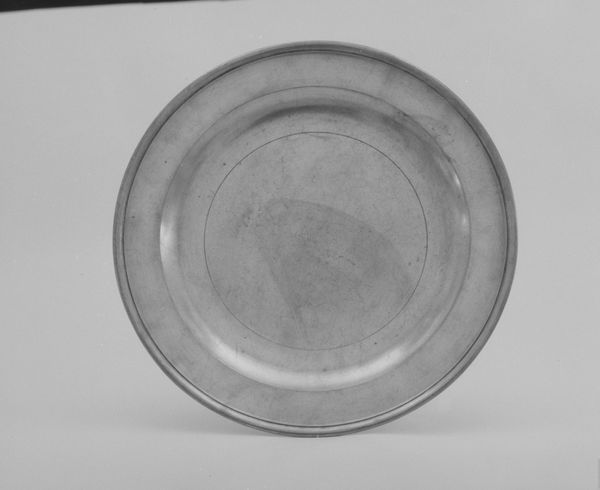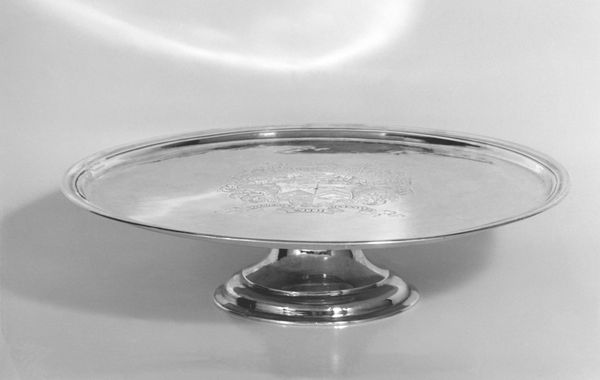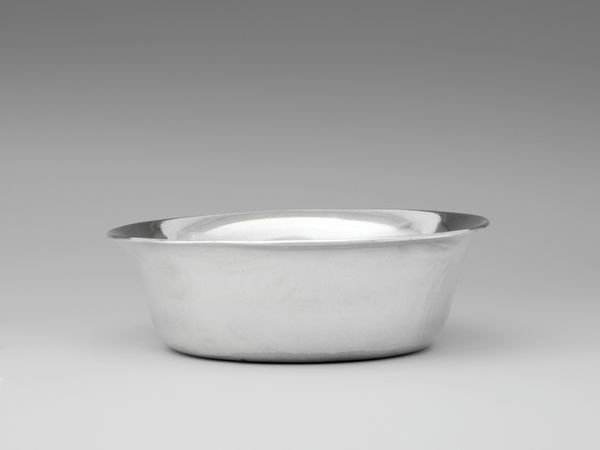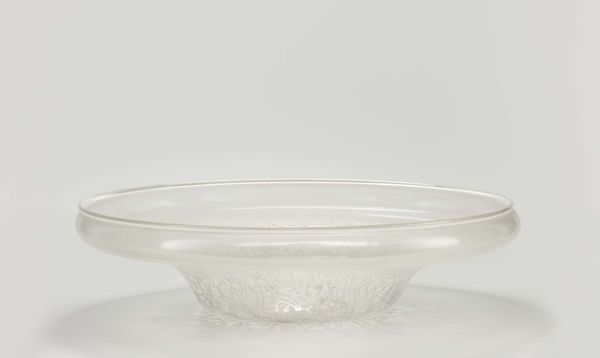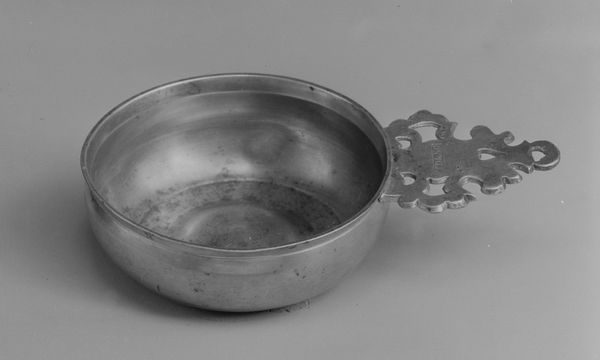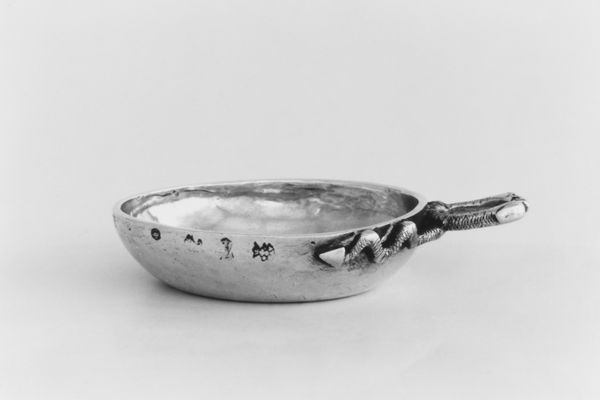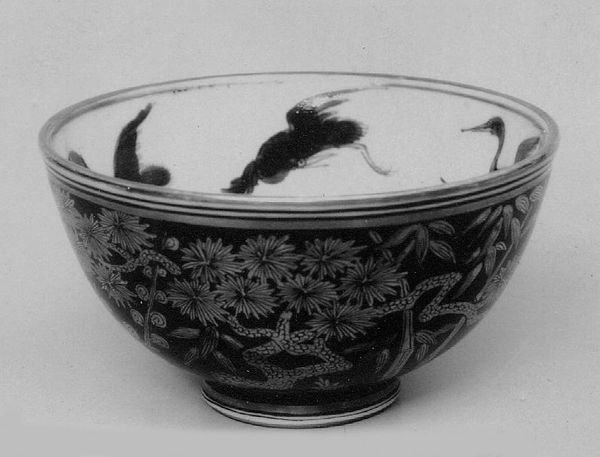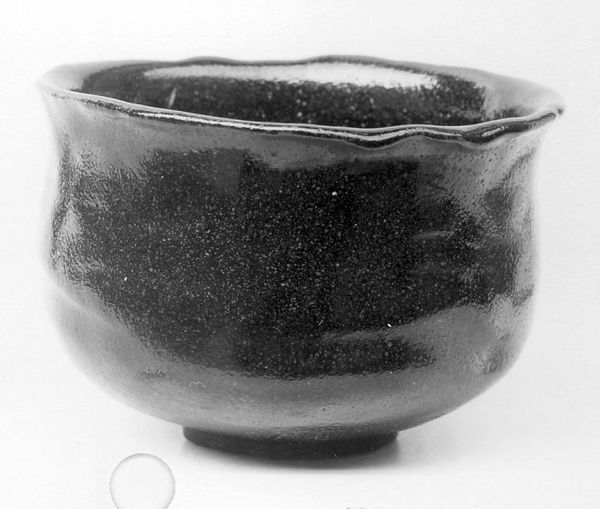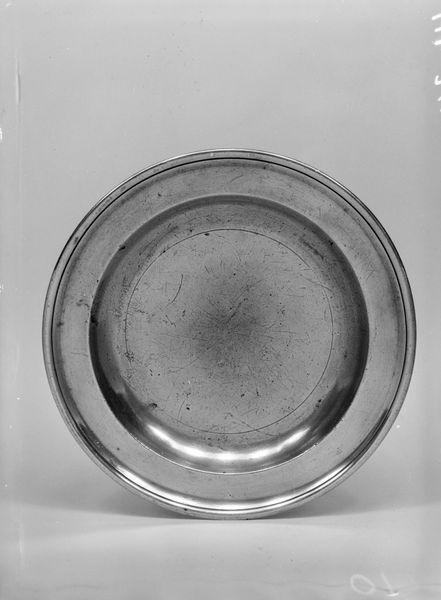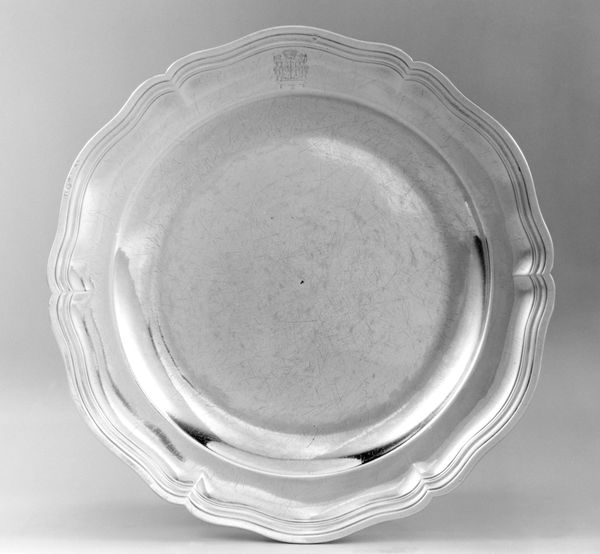
ceramic, earthenware
#
asian-art
#
ceramic
#
japan
#
earthenware
#
stoneware
Dimensions: H. 1 3/8 in. (3.5 cm); Diam. of rim 3 7/8 in. (9.8 cm); Diam. of base 1 1/4 in. (3.2 cm)
Copyright: Public Domain
Eiraku Hozen crafted this Sacrificial Bowl in Japan, likely during the first half of the 19th century. The delicate porcelain form, with its subtle curves and elevated base, speaks to a refined aesthetic. The bowl's monochrome palette, primarily white, invites a formal analysis centered on texture and relief. The bowl's interior features an intricate, almost ghostly, design achieved through delicate carving or molding. This understated decoration creates a play of light and shadow, challenging our perception of depth and surface. The smooth, glossy exterior contrasts with the textured interior. The dark rim, a thin line, sharply defines the bowl's edge, emphasizing its circular form and containing the ethereal design within. Consider how this bowl, with its subtle ornamentation, reflects broader artistic and philosophical concerns. Does the restraint in color and the emphasis on texture indicate a preference for suggestion over explicit representation? Is it intended to challenge fixed meanings, inviting contemplation on the transient nature of beauty and form? Such formal qualities encourage ongoing interpretation, highlighting the bowl's enduring relevance within cultural and philosophical discourse.
Comments
No comments
Be the first to comment and join the conversation on the ultimate creative platform.
